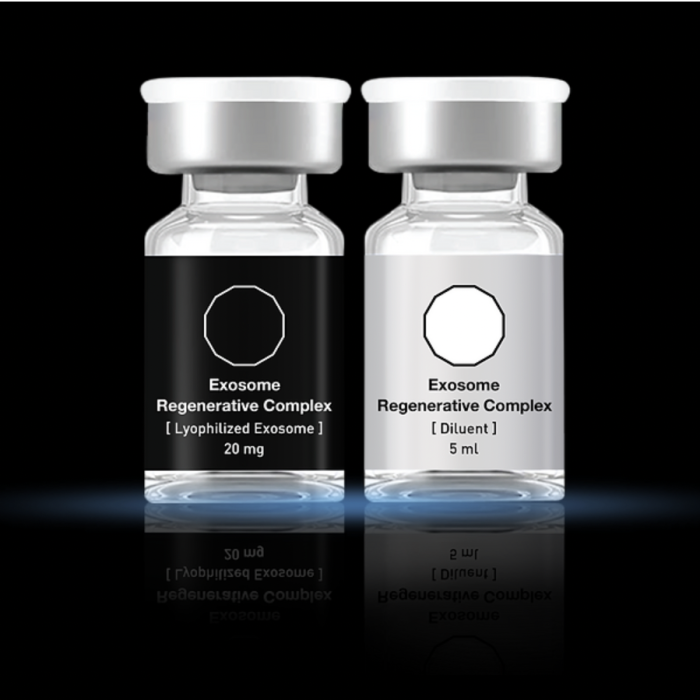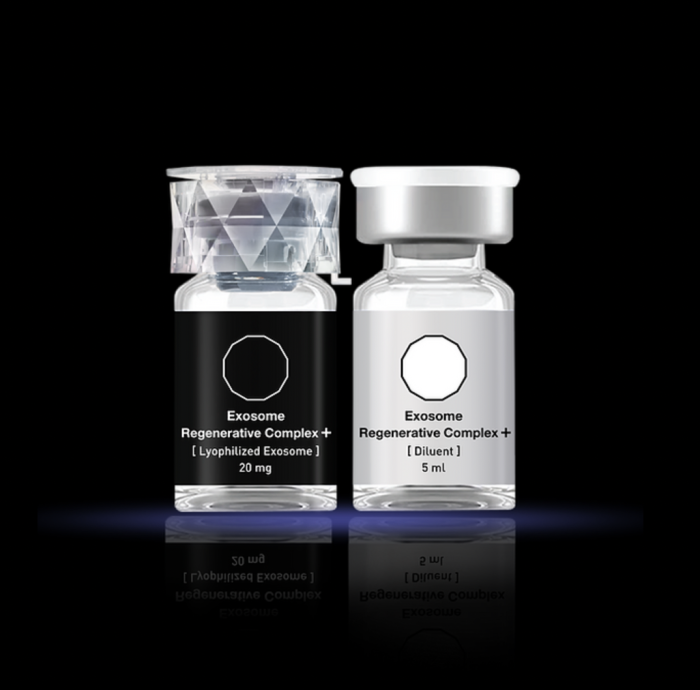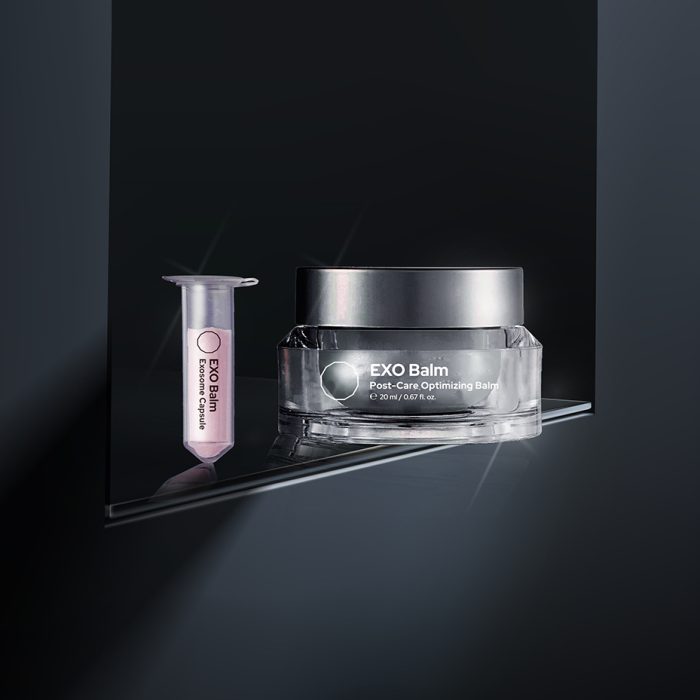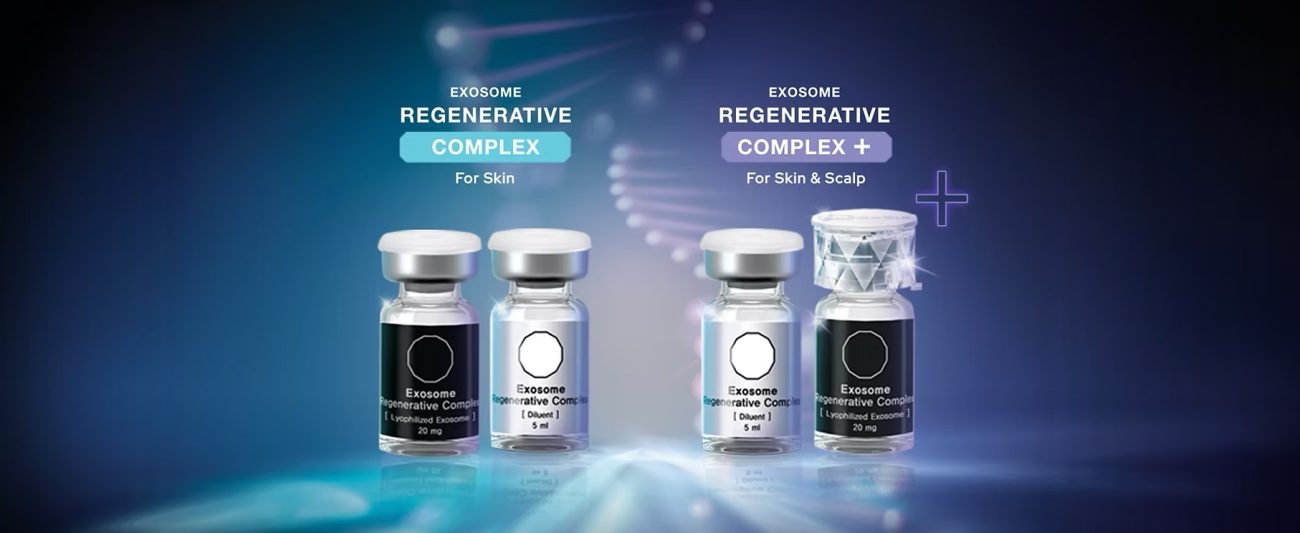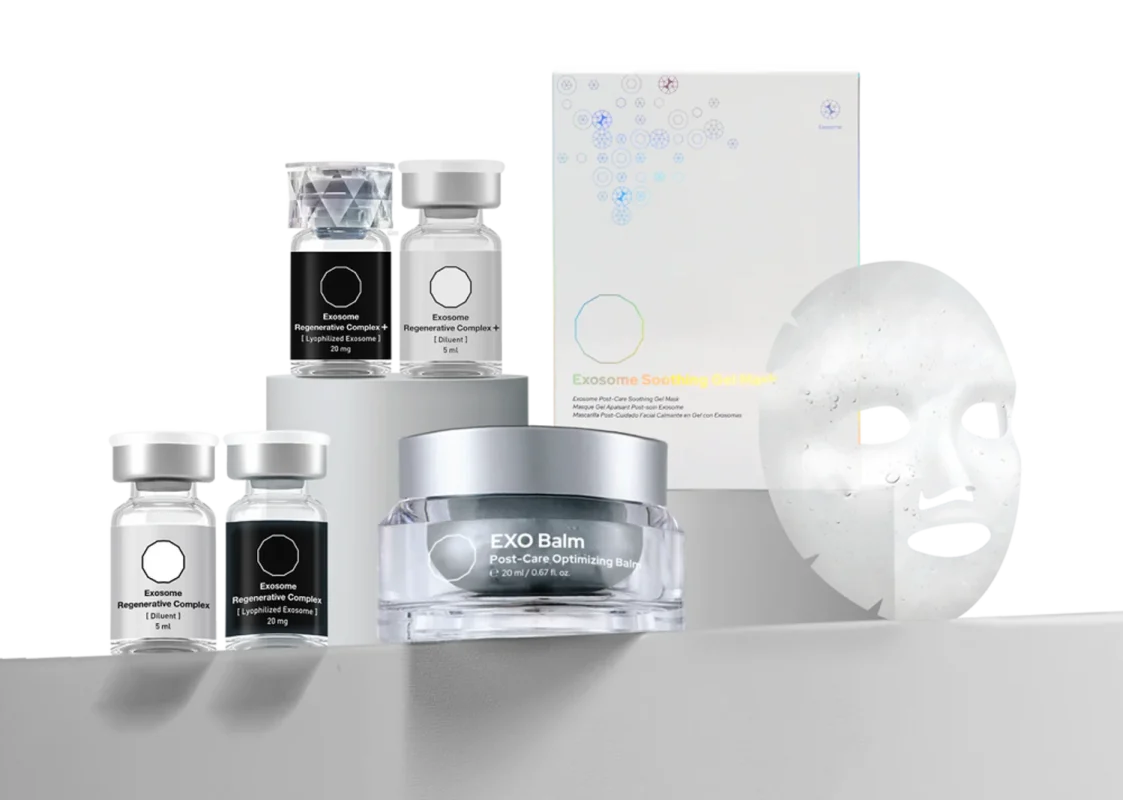5 Ways Exosomes Help Recovery After More Intense Cosmetic Procedures

Here, the experts break down five ways exosomes like BENEV’s help patients during procedure recovery.
1. Exosomes reduce redness
It’s common for temporary redness to occur after procedures like lasers and microneedling, but the good thing is, exosomes boast synergistic therapeutic benefits. As Dr. Khalifian explains, a few different mechanisms are leveraged with exosomes that turn off the signaling pathways for inflammation, which can lessen redness and sensitivity. “I see it improves recovery in my post-laser patients, particularly on the neckline, with redness and swelling,” says Dr. Khalifian. “It’s pretty profound.”
2. Exosomes reduce scarring
While dermabrasion or laser resurfacing can help reduce scarring, exosomes can act as an effective boost in combination with the treatments. Research shows that exosomes can help reduce scarring in general. Dr. Khalifian points to a split-face study that used an ablative laser on the whole face for acne scars, with one half receiving exosomes and the other not. “Not only did the half with exosomes recover faster, but [participants] also had improvement, a better improvement on the acne scale that they were using as an outcome measure. So the idea is that anything where we’re wounding or causing any type of inflammation, [exosomes are] going to home in on that inflammatory area and improve it, in terms of both redness and swelling and the outcome.”
3. Exosomes stimulate collagen
As we age, we begin to lose collagen—in fact, we lose 1% collagen synthesis per year. This causes the skin to become thinner, which in turn creates wrinkles and deep lines. “Collagen synthesis is the cornerstone of maintaining youth,” explains Dr. Saman. “But exosomes induce the fibroblasts by telling them to start laying down collagen, which is kind of like a biohack, in a way, because we’re bypassing that central command. And if we can create collagen, we increase our skin’s elasticity and thickness. Exosomes directly command fibroblasts to create collagen in the area to which they’re applied.”
4. Exosomes improve skin texture
Exosomes help hydrate and nourish the skin and can also treat uneven texture. Dr. Saman describes doing a split-face analysis with his patients using a radiofrequency microneedling device, with one side of the face getting PRP following the procedure, while exosomes were applied to the other half. “We were able to show a clinically significant improvement of skin texture, with exosomes showing a much better outcome than PRP,” says Dr. Saman.
5. Exosomes repair wounds
“Exosomes enhance recovery in things like skin grafts, burns, and surgical incisions, and they do that by accelerating tissue repair,” says Dr. Saman. In a 2021 study from the Journal of Investigative Dermatology, 81% of findings showed that exosome administration significantly improved wound-closure rate.
Aesthetic procedures like laser resurfacing and radiofrequency microneedling essentially cause controlled injury to the skin. The damage helps stimulate the skin’s recovery process. However, compared to childhood, when our skin could repair itself quickly, as adults, we now have a more robust inflammatory response, causing it to recover slower. “With exosomes, we’re reducing the inflammatory state, thereby resulting in a much better outcome overall, and then the skin just looks happier because it’s not so inflamed,” says Dr. Saman.
“With a facelift or neck lift scar or some other surgery, the outcome is just magical. And I can compare it because I was using PRP with the same laser, treatment, and provider just two years ago,” says Dr. Saman. “The only thing that’s changed is the switch from PRP to exosomes, and the outcomes are completely different.”
Shop Benev exosome products
-
 Benev Exosome Regenerative Complex
Earn 299.00 Reward Points
Benev Exosome Regenerative Complex
Earn 299.00 Reward Points
$299.00 – $799.00Price range: $299.00 through $799.00 -
 Benev Exosome Regenerative Complex Plus +
Earn 325.00 Reward Points
Benev Exosome Regenerative Complex Plus +
Earn 325.00 Reward Points
$325.00 – $899.00Price range: $325.00 through $899.00 -
 Benev EXO Balm Exosome Post-Care Optimizing Balm
Earn 185.00 Reward Points
Benev EXO Balm Exosome Post-Care Optimizing Balm
Earn 185.00 Reward Points
$185.00 -
 Benev Exosome Soothing Gel Mask
Earn 95.00 Reward Points
Benev Exosome Soothing Gel Mask
Earn 95.00 Reward Points
$95.00
PLEASE NOTE: This content is re-posted from www.RealSelf.com
What you do after getting a cosmetic procedure can make a huge difference in your results. Your skin is vulnerable after undergoing laser resurfacing, chemical peels, and microneedling treatments, and post-procedure care becomes crucial to ensure it recovers properly—and, in an ideal world, quicker than expected—during this sensitive phase. That’s where exosomes, tiny vesicles that facilitate essential cellular functions, come into play.
“Essentially, exosomes are the little envelopes that contain the information from the mother cell,” explains Dr. Masoud Saman, a board-certified facial plastic surgeon in New York City. “In the case of cosmetic exosomes, they contain growth factors, inflammatory or anti-inflammatory messages, messenger RNA, and other proteins that aid in things like collagen synthesis.”
In a recent study, it was shown that BENEV exosomes accelerate wound recovery, reduce inflammation, boost collagen production, and protect the skin from environmental stressors. Because applying topical exosomes potentially results in the best post-procedure experience, it’s no surprise that more and more providers are turning to topical exosomes, like those from BENEV. Dr. Gilly Munavalli, a board-certified dermatologist in Charlotte, North Carolina, uses BENEV exosomes post-radiofrequency microneedling, post-laser resurfacing, and for enhancing hair growth. “From my observation, exosomes accelerate the recovery process dramatically after procedures, diminishing post-treatment redness and swelling,” he says.
Dr. Saami Khalifian, a board-certified dermatologist in Vista, California, says exosomes work well to improve the outcome and recovery of any laser resurfacing treatment, like Halo or BBL, as well as more aggressive treatments, like erbium and fractional CO2 lasers. “When I’m doing ablative lasers, especially if I want to be a little more aggressive, I definitely am going to reach for my exosomes because it’s going to make them more effective,” he says. Typically, providers like Dr. Saami would use some sort of emollient or topical steroids to decrease inflammation, but now, he says, it’s “exosomes all the way.”
In the world of exosomes, BENEV stands out for myriad reasons. For one, the company uses stem cell–derived human adipose exosomes. Several studies, including a 2023 study from the International Journal of Molecular Sciences, found adipose tissue–derived exosomes to promote wound recovery and tissue regeneration for various clinical applications. BENEV also offers three types of exosome products that are chock-full of growth factors, peptides, amino acids, and all the vitamins and minerals that help with recovery. Exosome Regenerative Complex (ERC), a product used only in office, comes in a powder form that is rehydrated in a hyaluronic acid–based solution before being applied to the skin. ERC is specialized for skin concerns, such as reducing pigmentation and wrinkles, improving firming and hydration, and more.
BENEV ERC+ is also for in-office use and is “more highly enriched,” points out Dr. Khalifian. Along with skin improvements, it focuses on scalp rejuvenation and hydration, encouraging a healthy hair-growth cycle and making hair softer, shinier, and fuller. The third product in BENEV’s lineup is the EXO Balm, the only product available for at-home use. The exosome powder is mixed into the balm containing 20+ intensive hydrators, humectants, antioxidants, and peptides. Applied twice daily, the EXO Balm optimizes results and reduces inflammation and downtime. It helps treat inflamed skin, strengthens the skin barrier, and helps skin with texture and pigmentation issues. “My patients go home with the balm, and then they can keep [applying] more of the exosome cocktail,” says Dr. Khalifian.
PLEASE NOTE: This content is re-posted from www.RealSelf.com














